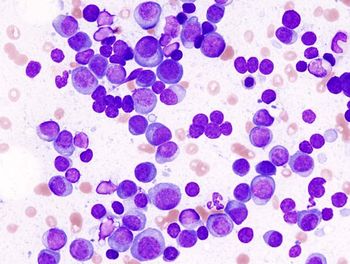
- Oncology Vol 29 No 4_Suppl_1
- Volume 29
- Issue 4_Suppl_1
(P115) The Experience of a Radiation Oncology Center in Gauging the Use of Single-Fraction Radiotherapy for Painful Bone Metastases
We observed an increase in the use of SFRT for bone metastases over the time period covered. Tracking the encounters by ICD codes and CPT codes, when properly coded, served as a useful tool in providing a snapshot view of SFRT usage. Additionally, physician education is a prerequisite for the proper use of a CPT 77431 to capture the true rate of usage of SFRT in clinical practice.
George A. Dawson, MD, Ignat Glushko, MBA, Alice V. Cheuk, MD; Veterans Health Administration
BACKGROUND: There is mounting category 1 evidence of the effectiveness of single-fraction radiotherapy (SFRT) in the treatment of uncomplicated, painful bone metastases [Jones, CA Cancer J Clin 2014]. Surveys indicate that physicians in the United States still prefer multiple fractions of RT for uncomplicated bone metastases compared with their Canadian or European colleagues [Popovic et al, Radiother Oncol 2014].
In this report, we used current procedure terminology (CPT) code tracking to determine the scope of use of SFRT for painful malignant bone lesions compared with multiple-fraction RT (MFRT).
METHOD: We searched for encounters with an International Classification of Diseases (ICD) code 198.5-Secondary malignancy of bone and/or bone marrow either in primary or secondary positions-and current procedural terminology (CPT) code 77431-Physician weekly visit for 1–2 treatments. Data points below represent 77431 usage only.
From 2002 to 2008, usage was as follows: 2002 (0), 2003 (0), 2004 (5), 2005 (1), 2006 (7), 2007 (4), and 2008 (0). From 2009 to October 13, 2014, usage was as follows: 2009 (0), 2010 (0), 2011 (4), 2012 (12), 2013 (10), and 2014 (8). These periods were chosen to reflect a surge in interest in SFRT usage at the end of life, such as the Choosing Wisely Campaign of the American Society of Radiation Oncology in 2013.
Data limitations/assumptions: Not all providers code appropriately for both procedures and diagnosis.
RESULTS: We noted a 133% increase in the use of SFRT for painful bone lesions at our center from 2002–2008 to 2009–October 13, 2014. On average, CPT code 77431 was used 2.43 times a year for patients with ICD code 198.5 of bone metastases from 2002–2008, and 5.67 times (8.50 times, excluding 2009 and 2010) from 2009–October 13, 2014. Of note, in 2002, 2003, 2008, 2009, and 2010, CPT code 77431 was not used at all.
CONCLUSION: We observed an increase in the use of SFRT for bone metastases over the time period covered. Tracking the encounters by ICD codes and CPT codes, when properly coded, served as a useful tool in providing a snapshot view of SFRT usage. Additionally, physician education is a prerequisite for the proper use of a CPT 77431 to capture the true rate of usage of SFRT in clinical practice.
Proceedings of the 97th Annual Meeting of the American Radium Society -
Articles in this issue
Newsletter
Stay up to date on recent advances in the multidisciplinary approach to cancer.

















































































